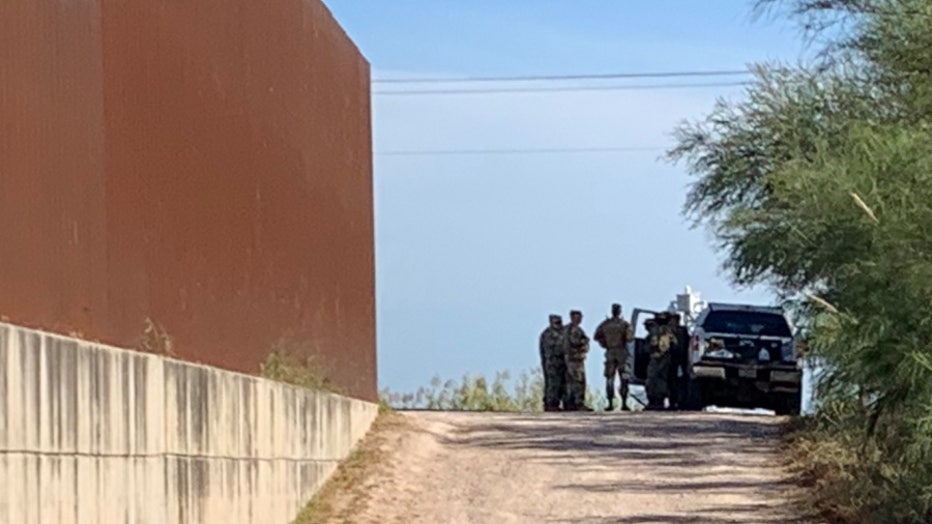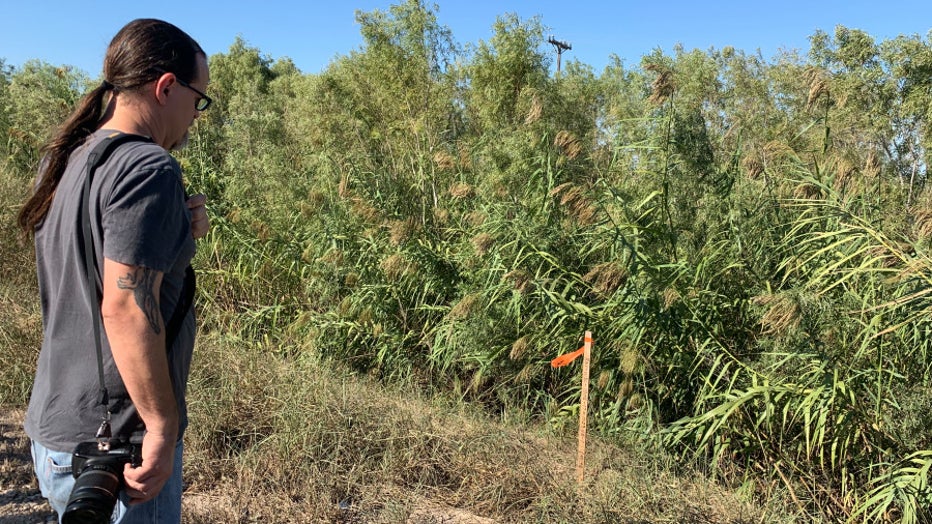300 National Guard troops deploy to ‘militarized zone’ at South Texas border
HIDALGO, Texas (Border Report) — As South Texas residents say they have begun noticing a heightened presence of law enforcement patrolling the border recently, 300 National Guard troops just deployed to the region, a U.S. Border Patrol spokesman confirmed to Border Report on Monday afternoon.
A Border Patrol spokesman said the 280 to 300 new National Guard troops arrived last week and replaced the same number of U.S. Army troops who had been deployed here. “National Guard from Georgia that are taking over those posts,” the spokesman said.
National Guard units had originally been posted in South Texas in 2015 by U.S. Gov. Greg Abbott to combat a surge of migrants, mostly from Central American countries. But as the surge continued year after year, some active U.S. Army troops were brought in to the region.
Now some of these troops are being replaced with National Guard once again, the spokesman said.
In June, Abbott had announced that he would send 1,000 National Guard troops back to the U.S.-Mexico border while accusing Congress of failing to address the crisis at the border. An Associated Press story said the total number of Guard members on the Texas border would not exceed 2,000. At the time there also were 1,400 active-duty U.S. Army soldiers, the Military Times reported.

Eco-tourism draws Winter Texans
So as Winter Texans are returning to South Texas, it appears the National Guard is returning once again, as well.
A big draw for the Winter Texans — mostly seniors who come here to escape the harsh northern winters — is the subtropical climate and eco-tourism of South Texas.
The days are still in the upper 80s here and the sky is big, blue and cloudless most of the time. Hundreds of species of birds can be enjoyed in the region, such as at the Old Hidalgo Pumphouse and World Birding Center in Hidalgo, Texas.
But this fall, the seniors might notice an increase of law enforcement agents on the order, including the new National Guard troops.
And as construction ramps up for the border wall in several sections of the Rio Grande Valley, more places that used to be open to the public, like some hike and bike trails, are being closed, environmentalists say.
Throughout the border region, hundreds of two-foot wooden stake markers with various pink, orange and red ribbons have begun popping up in areas slated for new border wall and infrastructure construction.
Residents note that as border wall construction and/or land clearing begins on different sections of the wall here, they are having a harder time accessing some of the popular outdoor spaces.
This includes some sections of the Lower Rio Grande Valley National Wildlife Refuge, and a popular 900-year-old Montezuma Bald Cypress tree.
Hiking trails were off-limits
On Sunday, several officers from the U.S. Fish & Wildlife Service, U.S.
Border Patrol, and half a dozen National Guard troops were patrolling an area about a mile east of the Old Hidalgo Pumphouse and World Birding Center. This is where the existing border levee wall ends — which was built in 2009 as part of the Secure Fence Act — and stakes have been planted indicating new border wall is to be built.
A Fish and Wildlife agent was not allowing residents to access the nearby trails south of the levee, which are part of the Lower Rio Grande Valley National Wildlife Refuge.
Border Report was on the south side of the existing border levee and was told that the area south of the levee is now off-limits.
“That area is all closed. It’s part of the Lower Rio Grande Valley Fish and Wildlife Refuge. You can’t go down there,” an unidentified U.S. Fish and Widlife officer, who said is on temporary deployment from Massachusetts to the region, said.
When shown a nearby sign at the existing border levee wall that reads “PEDESTRIAN WALKING TRAIL,” the agent reiterated that the area is closed to the public.
Scott Nicol, co-chairman of the Sierra Club’s Borderlands campaign and a member of the Lower Rio Grande Valley Sierra Club was among those told to stay away from those trails.
“This is a militarized zone,” he said.
This is a militarized zone,”
Scott Nicol, Sierra Club’s Borderlands campaign
“These places like the pond, the hike and bike trails, the Pumphouse are cultural areas where not just locals but people come and visit come to see and appreciate nature, and that connection is being disrupted, they’re literally putting a wall there,” said Jonathan Salinas, who is part of the grassroots No Border Wall Coalition, and a member of the Lower Rio Grande Valley Sierra Club. “I think the government, the Border Patrol, the U.S. Army Corps, are trying to make those places un-enjoyable so people will stop going.”

A Border Patrol spokesman said U.S. Fish and Wildlife, and all government agents working the border area, have the discretion to deem areas closed to the public if they feel a threat warrants it. “Our field commanders will send forces where they are needed, based on operational needs,” the spokesman said. “Station leadership will send resources based on operational need but it’s not based on infrastructure projects.”
Nicol pointed to a stack of ladders near the existing border wall, which have been used to scale the wall, and said it is proof that the wall won’t keep people out. He said that he believes President Donald Trump is only interested in professing to the American public how many miles of new border wall are being built, not the consequences this construction has on local border communities.
“CBP doesn’t want the attention that their activities will bring. They don’t want to see people protest. They don’t want to see people reaching out to their members of Congress. They just want to put up Trump’s giant campaign billboard and make the boss happy,” Nicol said.
On Sept. 29, CBP in partnership with the U.S. Army Corps of Engineers announced that 65 miles of a new border wall could go up in South Texas starting in 2020. The cost for the wall and surrounding enforcement zone in the counties of Hidalgo, Starr and Cameron, will cost between $385 million to $813 million.
Sandra Sanchez can be reached at SSanchez@BorderReport.com.
Visit the BorderReport.com homepage for the latest exclusive stories and breaking news about issues along the United States-Mexico border.

